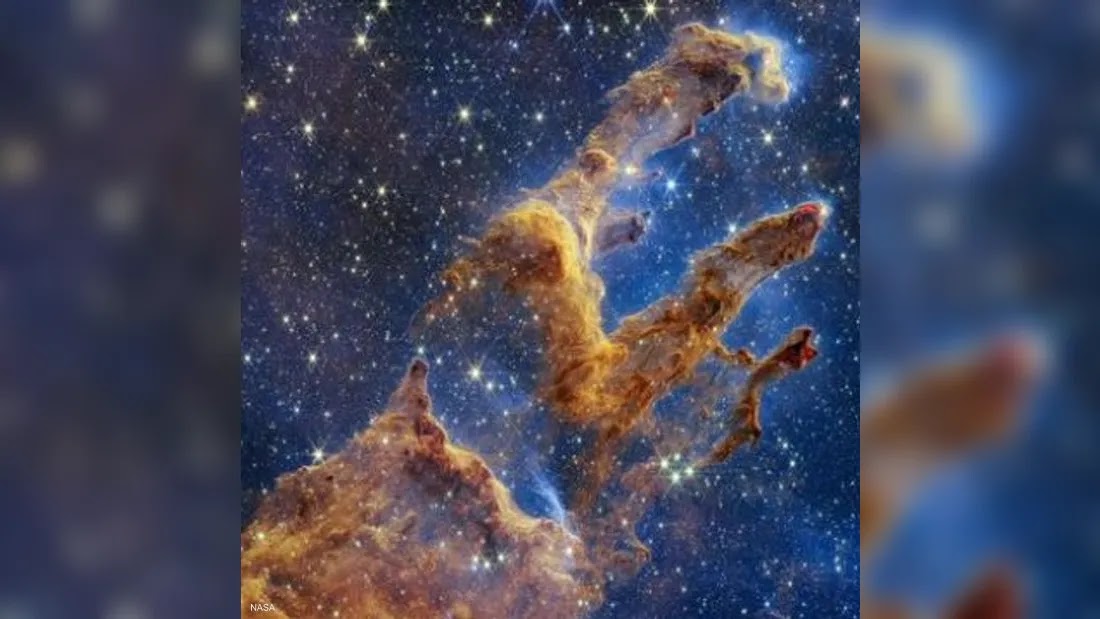The James Webb Observatory of the US space agency, NASA, managed to capture new images of the so-called "pillars of creation", which are clouds of gas, dust and stars. The images revealed columns of gas and dust surrounded by countless sparkling stars.
The first time this cosmic phenomenon was observed was in 1995, and then in 2014, it was by the Hubble telescope, but the new images are the most detailed presentation of this amazing phenomenon. In 2014, the Hubble Observatory was able to photograph bright red stars, but the James Web camera was more advanced, so it was able to see the glowing flash as it is space.
Thanks to the new observatory, the thick, dusty brown "pillars of creation" are no longer as opaque as in the past. The Pillars of Creation are 7,000 light years away from Earth.
This image will help astronomers reach a more accurate count of the newly discovered stars, as well as the amounts of gas and dust in the region. This is because gas and dust in this region are seen agglomerated with each other, and groups of stars can be seen clearly covered with dust.
The James Webb observatory team proudly said that the new images will help them learn how stars are formed, according to the British newspaper, "The Daily Mail". The team used an infrared camera, which is able to detect light from the oldest stars and galaxies.
The telescope relied on a wide range of infrared rays to see the past, and this was done by analyzing the time it took for the light to travel through space. And James Webb observed wavy lines at the edge of some of the pillars, where stars are forming in the dust and gas.










0 Comments